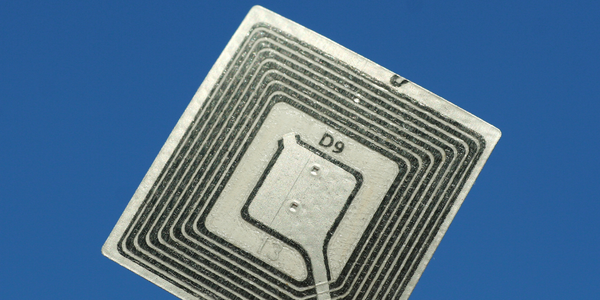公司规模
Large Corporate
地区
- Europe
国家
- Portugal
- Switzerland
- Romania
产品
- Modaris 3D
技术栈
- 3D Prototyping
实施规模
- Enterprise-wide Deployment
影响指标
- Productivity Improvements
- Cost Savings
- Customer Satisfaction
技术
- 功能应用 - 产品生命周期管理系统 (PLM)
- 分析与建模 - 数字孪生/模拟
适用行业
- 服装
- 消费品
适用功能
- 产品研发
- 质量保证
用例
- 快速原型制作
- 数字孪生
服务
- 软件设计与工程服务
- 系统集成
关于客户
Odlo is a technical sportswear brand established in Norway in 1946 and now headquartered in Switzerland. The company designs, produces, and retails high-performance sportswear and is sold in 25 countries with 4,500 points of sale worldwide, including 36 of its own stores and 14 outlet stores. Odlo is known for its innovative fabrics and holds a significant market share in the sports underwear category in Europe. The brand aims to stay ahead of market trends and ensure that its products are the first to arrive on the market.
挑战
Odlo, a renowned technical sportswear brand, aimed to expand its consumer base by targeting more performance-oriented customers. To achieve this, the company needed to speed up its product development process to quickly react to fashion and weather trends. This would enable them to get new products to stores in time to capitalize on market demand. The challenge was to streamline the development process while maintaining the high quality and performance standards that Odlo is known for.
解决方案
Odlo adopted Lectra's Modaris 3D patternmaking solution for its product development department. This 3D prototyping technology significantly reduced the number of physical samples and fittings required, thereby speeding up the development process. The solution also improved communication and reduced misunderstandings between Odlo’s teams in Switzerland and Portugal by allowing everyone to work from the same image in real time. This led to more efficient operations and cost savings. The technology also enabled Odlo's patternmakers to take more creative risks, as they could instantly see the impact of their changes in multiple positions without the need for physical samples.
运营影响
数量效益

Case Study missing?
Start adding your own!
Register with your work email and create a new case study profile for your business.
相关案例.

Case Study
Fire Alarm System and Remote Monitoring Sytem
Fire alarm systems are essential in providing an early warning in the event of fire. They help to save lives and protect property whilst also fulfilling the needs of insurance companies and government departments.Fire alarm systems typically consist of several inter-linked components, such as smoke detectors, heat detector, carbon monoxide, manual call points, sounders, alarm and buzzer. The fire alarm system should give immediate information in order to prevent the fire spread and protect live and property.To get maximum protection a shoe manufacturer in Indonesia opted for a new fire alarm system to monitor 13 production sites spread over 160 hectars. Although the company had an existing fire alarm system, it could not be monitored remotely.It was essential that the new system would be able to be monitored from a central control room. It needed to be able to connect to the existing smoke detector and manual call point. Information should be easily collected and passed on to the Supervisory Control and Data Acquisition (SCADA) system. Furthermore, the system should have several features such as alarm management, auto reporting, being connected to many client computers without additional cost, and run 24/7 without fails. The company also needed a system which could be implemented without changing the architecture of the existing fire alarm system.

Case Study
IoT Applications and Upgrades in Textile Plant
At any given time, the textile company’s manufacturing facility has up to 2,000 textile carts in use. These carts are pushed from room to room, carrying materials or semi-finished products. Previously, a paper with a hand-written description was attached to each cart. This traditional method of processing made product tracking extremely difficult. Additionally, making sure that every cart of materials or semi-finished products went to its correct processing work station was also a problem. Therefore, the company desired an intelligent solution for tracking assets at their factories. They also wanted a solution that would help them collect process data so they could improve their manufacturing efficiency.
.png)
Case Study
Improving Vending Machine Profitability with the Internet of Things (IoT)
The vending industry is undergoing a sea change, taking advantage of new technologies to go beyond just delivering snacks to creating a new retail location. Intelligent vending machines can be found in many public locations as well as company facilities, selling different types of goods and services, including even computer accessories, gold bars, tickets, and office supplies. With increasing sophistication, they may also provide time- and location-based data pertaining to sales, inventory, and customer preferences. But at the end of the day, vending machine operators know greater profitability is driven by higher sales and lower operating costs.

Case Study
Retailer Uses RFID Scanner to Improve Efficiency
Patrizia Pepe wished to improve the logistics of their warehouse: accepting incoming goods from their production sites, movement of items throughout
the warehouse, and packaging of goods for distribution to the retail locations. They initially tried to use barcodes for this function. Because barcodes must be individually scanned within a line-of-sight, the acceptance of goods coming into the warehouse was too time consuming. Working with the University of Florence, Patrizia Pepe instituted a five-month pilot project beginning in August of 2009 to test the validity of an RFID solution. The pilot involved tagging of about 60,000 items for the second seasonal collection, and convinced the company to move forward with tagging all items.









